- Call us: 01444 237070
- Contact Us
- Stores
- Sign In / Register
-
- Back
- Used Cameras
- Used Accessories
- Used Lenses
- Used Video
- Used Film Equipment
- Used Stock Alert
- Used Blank Test
- Sell or Part Exchange
- Used Clearance
- Recently Added Used Equipment
- Park Picks
- All Used Black Friday Deals
- Faulty
- Trade-In
- Blog
- New in
- Call us
- Contact us
- Stores
- Sign in
- Categories
- Tips & Inspiration
- Reviews
- News
- Events
- Features
- Buying Guides
- Competitions
Tips for Getting Started in Macro Photography
The art of Macro Photography can be a fantastic way to explore the natural world, and give you a different perspective when capturing photos. It can take patience, and practise, but can give you some fantastic results.
So we sat down with professional wildlife macro photographer Geraint Radford for his advice about how you can get started in Macro Photography, and what you need to do it. We hope you find his thoughts helpful for your own photography.
Macro Photography opens the door to a hidden world of endless possibilities and subjects.
This type of photography requires specialist equipment, namely a dedicated macro lens. When choosing a lens, keep in mind that longer focal lengths will increase the distance between us and our subjects. For insect photography, a macro lens of around 100mm and above will reduce the chances of us spooking them by getting too close. This isn’t such an issue for non-flying or skittish creatures.
If you don’t have a macro lens just yet, don’t let that stop you from exploring the close-up world!
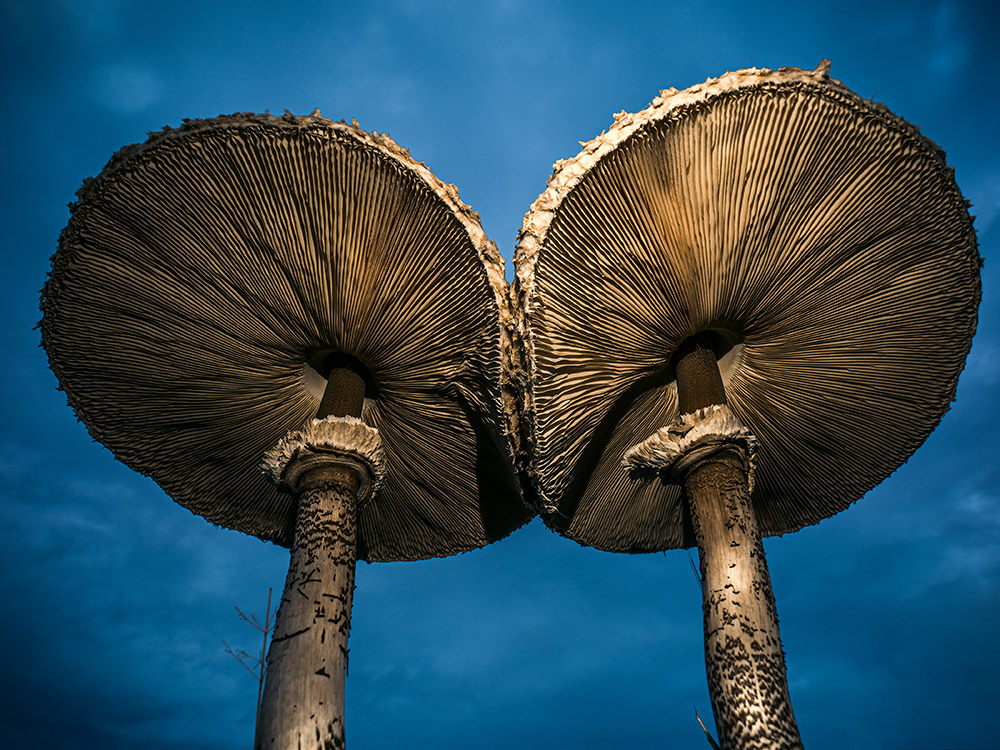
- Shot using an OM System OM-1 + Olympus 9-18mm f/4.0-5.6 | 1/10s f/9, ISO 80
The image above was captured with a wide-angle lens and lit with the torch from my mobile phone. If we wish to capture the close-up details, we will need to invest in a macro lens.
Macro photography takes a lot of practice and patience. By design it is rather challenging because working close to our subjects reduces depth of field considerably, and approaching wild subjects can be a tad difficult at times!
Stick with it, it will be worth it.
When someone is starting out, I would suggest that we keep things as simple as possible, to not overwhelm ourselves and ruin the fun. Pressure and stress are barriers to learning, so take your time. We can add flashes, diffusers and learn to focus stack once the basics are covered.
Working with a limited depth of field means we must use smaller apertures to get more of our subjects in focus, this pushes our shutter speed which can introduce camera shake and motion blur. A sturdy tripod that also offers flexibility to composition solves the camera shake problem. Personally I use Jay and Bucky from 3 Legged Thing, with the Ollie L-bracket for ease of use with my OM System OM-1 and OM System M.Zuiko Digital ED 90mm f/3.5 Macro IS PRO lens (which has a 180mm field of view).
Don’t rush into manual exposure mode, instead experiment with aperture priority. This way we pick the aperture and ISO, and the camera will automatically adjust the shutter speed for us, one less thing to think about is always welcome!
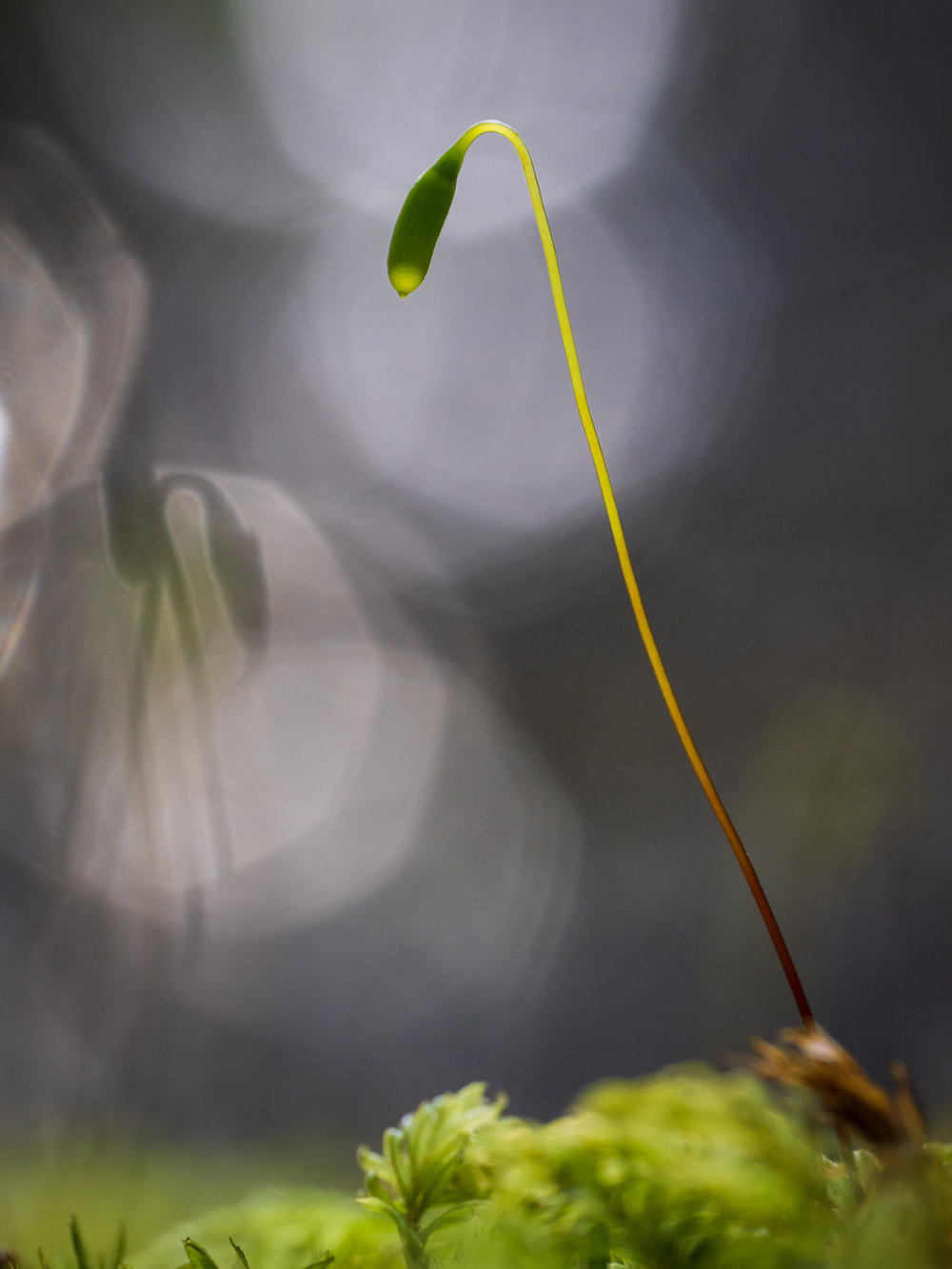
- Shot using an OM System OM-1 + M.Zuiko Digital ED 90mm F/3.5 Macro IS PRO | 1/40s f/9, ISO 400
At aperture f/9 this achieved enough depth of field so that the moss sporophyte is in focus.
Plants and mushrooms are perfect subjects for us to hone our skills whilst capturing images that we can be proud of. Bugs often show up unexpectedly so be prepared for some awesome moments.
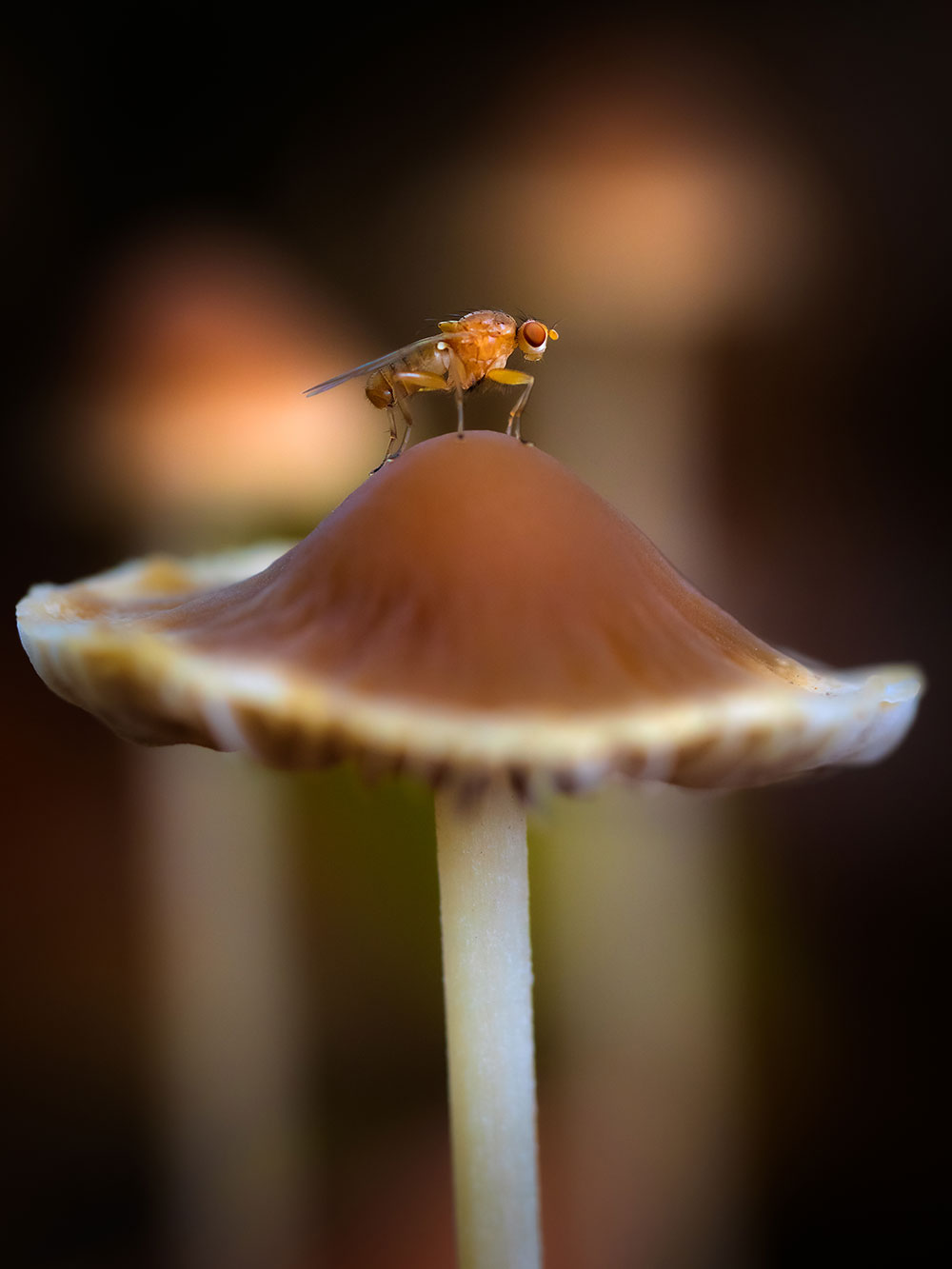
- Shot using an OM System OM-1 + M.Zuiko Digital ED 60mm F/2.8 Macro | 1/250s f/2.8, ISO 800
Embrace a shallow depth of field by shooting wide open to create ethereal images.
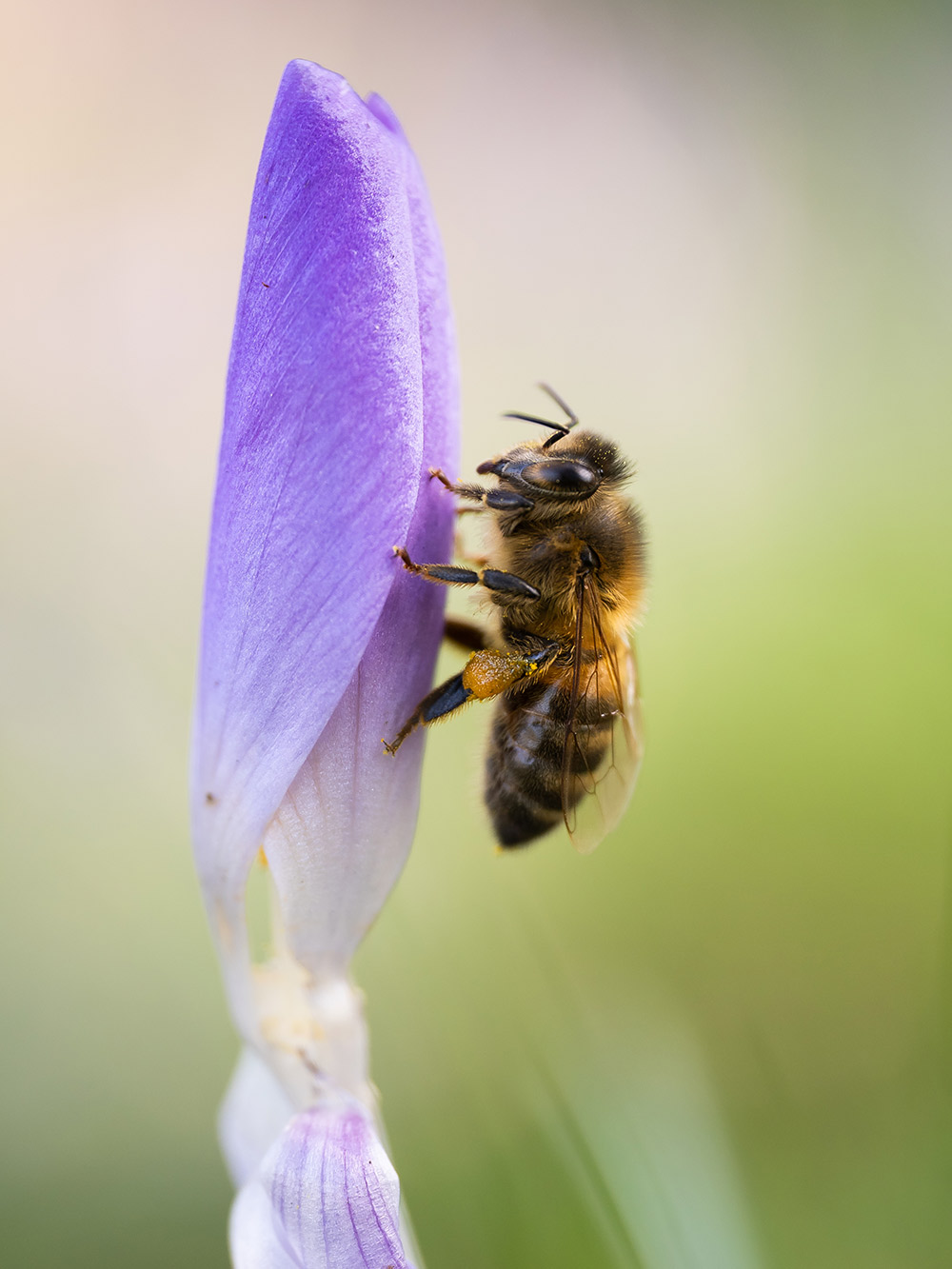
- Shot using an OM System OM-1 + M.Zuiko Digital ED 90mm F/3.5 Macro IS PRO | 1/125s f/3.5, ISO 400
Overcast weather is wonderful for capturing soft, delicate tones and details.
Although photography can be a technically challenging craft, we shouldn’t forget that composition and use of light are equally as important, if not more so.
Keep your images simple, avoid visual clutter and elements that distract from your main subject.
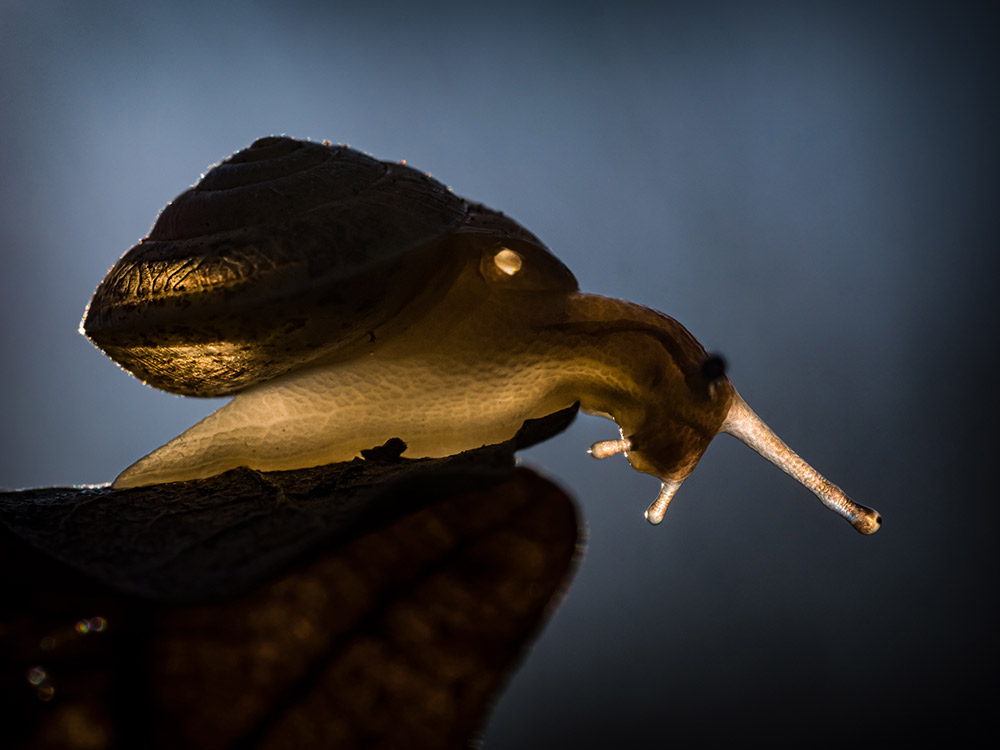
- Shot using an OM System OM-1 + M.Zuiko Digital ED 90mm F/3.5 Macro IS PRO | 1/125s f/3.5, ISO 400
Backlighting with natural light can create wonderful opportunities for distinctive images.
Shoot as often as possible, even for just 30 minutes a day, this way you will become familiar with your equipment and the subtleties of photography. Once we’ve learned the basics well, we can add new skillsets to our arsenal.
Focus Stacking:
Focus stacking is an advanced technique that allows us to greatly increase our depth of field without compromising on light and detail. We shoot multiple images at different focus distances and then use software such as Photoshop, Helicon or Zerene to merge the files into one image.
I would recommend practicing this technique with household objects and then heading out into the field, this will alleviate the pressure and make the process much more enjoyable.
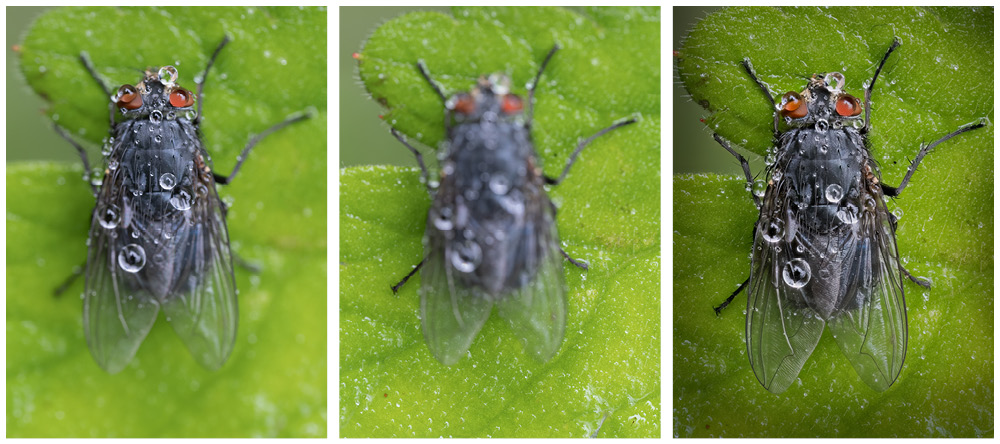
- First image of the sequence, as you can see there is minimal depth of field, even at f/10. The final image in the sequence displays the bottom edge of the frame is in focus. On the right you can see all 15 images blended in Zerene Stacker.
When the images are combined, we have a lot more of depth of field and all the details are revealed. I used the automatic focus bracketing feature in my camera. Those without this feature would need to manually adjust the focus after each frame, taking care that the in-focus areas overlap each time. A tripod will eliminate a lot of hardship here.
There are amazing photographers out there to find inspiration from, but please do not compare yourself to them or feel disappointed at the beginning of your journey into this amazing macro world. Everyone starts somewhere and with time your images and skills will develop.
Have fun, enjoy the process, and remember that our subjects are more important that our images.

- 122 image focus stack, using tripod. | 1/20s f/5.0, ISO 200.
About Geraint Radford:
Geraint Radford is a professional wildlife macro photographer and tutor, an insect’s best friend, vegan and cake addict.
Growing up in the beautiful Welsh valleys his days were often spent with his younger brother exploring the outdoors and searching for bugs, slow worms and other mini beasts. This is where he found his deep love and appreciation of nature and wildlife.
In 2010 he purchased his first DSLR and began his journey into the world of photography. A year later he was a working commercial photographer with a wide range of clients but in 2016 he decided to follow his heart and became a full-time nature photographer specialising in insect photography.
Macro photography is his way of sharing with others the amazing creatures and plant life that often goes overlooked and he does so with the welfare of the subject as a priority. All his subjects are photographed as and where they are found with no physical manipulation or harm.
Geraint’s photographs have been used by The BBC in calendars and magazines and can be seen in various photographic magazines and online articles.
We hope you enjoyed this post. If you did, why not read some of our other articles:
Complete Guide To Nature Macro Photography
M.Zuiko Digital ED 90mm F/3.5 Macro Lens Review
Share this post:
By Park Cameras on 04/10/2023

Trade in your old equipment
Fast and easy trade in service ensures your old gear is collected efficiently and you are paid quickly! It's very simple to trade in your unwanted photography gear. Just head over to our dedicated Sell or Part Exchange page, fill out the details, and we'll get back to you with an offer for your old gear. Take the cash, or put it towards the cost of your new gear. It's up to you! Find out more
sign up to the newsletter
Keep up to date on the latest photography news, events and offers. Sign up now
